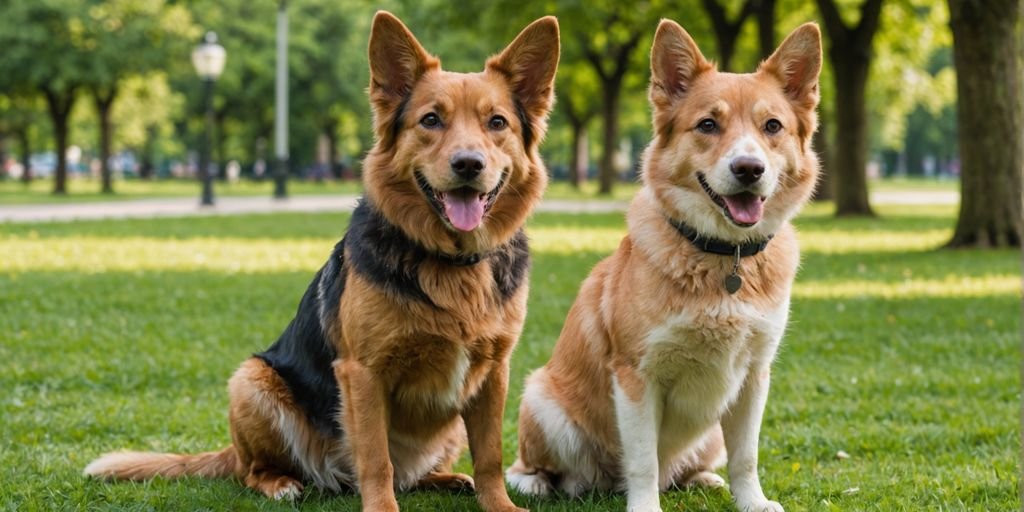Pet obesity is a growing problem that affects the health and happiness of our furry friends. Just like in humans, carrying extra weight can lead to a host of health issues for pets, including diabetes, heart disease, and joint problems. This guide will help you understand the causes and risks of pet obesity and provide you with practical strategies to help your pet achieve and maintain a healthy weight.
Key Takeaways
- Consult with a veterinarian to rule out any underlying medical conditions before starting a weight loss plan for your pet.
- Set realistic weight loss goals and monitor your pet’s progress regularly, making adjustments as needed.
- Choose a balanced diet that is appropriate for your pet’s age, breed, and activity level, and control portion sizes.
- Incorporate regular exercise and play into your pet’s daily routine to help them burn calories and stay active.
- Educate yourself on the long-term maintenance and prevention of pet obesity to ensure your pet remains healthy and happy.
Understanding Pet Obesity

The Prevalence of Pet Obesity
Pet obesity is a growing concern for both veterinarians and pet owners. A 2022 survey by the Association for Pet Obesity Prevention found that 61% of cats and 59% of dogs in the U.S. are overweight or obese. This indicates a widespread problem that affects the health and well-being of our pets.
Health Risks Associated with Obesity
Obesity in pets can lead to numerous health issues, significantly impacting their quality of life. Some of the most common obesity-related medical issues include:
- Arthritis
- Diabetes
- Heart failure
- Liver disease
- Chronic kidney disease
These conditions can be costly to treat and may require long-term management.
Recognizing Signs of Obesity in Pets
Identifying obesity in pets early can help prevent serious health problems. Signs to look for include:
- Difficulty in feeling ribs under the pet’s fur
- Lack of a visible waistline
- Fat deposits over the back and base of the tail
- Reduced energy levels and reluctance to exercise
If you notice any of these signs, consult your veterinarian for a proper diagnosis and treatment plan.
Obesity is not just a cosmetic issue; it is a significant health concern that requires immediate attention. Taking proactive steps can help your pet live a healthier, happier life.
Creating a Comprehensive Weight Loss Plan

Consulting with a Veterinarian
Before starting any weight loss plan, it’s crucial to consult with a veterinarian. They can assess your pet’s overall health, identify any underlying medical conditions, and recommend a tailored plan. This ensures that the weight loss process is safe and effective for your pet.
Setting Realistic Goals
Setting achievable goals is essential for a successful weight loss journey. Aim for a gradual reduction in weight, typically around 5% to 10% over one to three months. This slow approach helps prevent your pet from feeling hungry and ensures sustainable results.
Monitoring Progress and Adjusting Plans
Regularly monitor your pet’s progress and be prepared to adjust the plan as needed. Keep track of their weight, activity levels, and overall well-being. If you notice any issues or if the weight loss plateaus, consult your vet to make necessary changes. Patience and flexibility are key to a successful weight loss program.
Nutritional Strategies for Weight Loss

Choosing the Right Diet
Selecting the appropriate diet is crucial for your pet’s weight loss journey. High-fiber, low-calorie diets are often recommended. These diets help your pet feel full while consuming fewer calories. Consult your veterinarian to determine the best diet for your pet’s specific needs.
Portion Control and Meal Frequency
Portion control is essential in managing your pet’s weight. Measure each meal precisely and avoid free-feeding. Split your pet’s daily food intake into two or more meals to help maintain their energy levels and prevent overeating. An effective strategy to avoid rebound weight gain is to increase the amount previously fed for weight loss by 10 percent and continue regular weight checks.
The Role of Treats in Weight Management
Treats can be a significant source of extra calories. Limit treats to no more than 10% of your pet’s daily caloric intake. Opt for low-fat, healthy treats, and consider using vegetables like green beans as a snack. Always account for treats in your pet’s overall calorie count.
Consistency in diet and portion control is key to successful weight management. Regularly monitor your pet’s progress and adjust their diet as needed to ensure they continue to lose weight safely.
Exercise and Physical Activity

Types of Exercises for Dogs
Exercise is crucial for your dog’s health. Daily walks are essential, but there are many other activities to consider. Swimming is a great low-impact exercise that can help dogs with joint issues. You can also try dog-friendly yoga classes, hiking, or even running. Always consult your vet before starting any new exercise routine to ensure it’s safe for your pet.
Incorporating Play into Exercise
Playtime can be an excellent way to get your dog moving. Games like fetch or tug-of-war not only provide physical exercise but also mental stimulation. Puzzle toys can also keep your dog’s mind active while encouraging movement. The key is to make exercise fun and engaging for your pet.
Safety Considerations for Physical Activity
When exercising your dog, safety should always be a priority. Avoid extreme sports unless your dog is trained for them. Be mindful of weather conditions, as high temperatures can lead to heat stroke or burnt paw pads. Introduce new activities slowly to prevent injuries. Always keep your dog’s breed, age, and physical condition in mind when planning exercise routines.
Behavioral and Environmental Factors
Addressing Begging and Overfeeding
One of the most common issues pet owners face is begging and overfeeding. Pets often learn that begging results in treats or extra food, which can lead to weight gain. To combat this, establish a strict feeding schedule and stick to it. Avoid giving in to those pleading eyes, and instead, offer affection or playtime as a reward.
Creating a Stimulating Environment
A stimulating environment can help pets stay active and burn more calories. For example, if you have a two-story home, place your cat’s favorite bed or food bowl on the second floor to encourage more movement. Puzzle feeders and interactive toys can also mimic natural hunting behaviors, making mealtime more engaging and physically demanding.
The Impact of Household Dynamics on Pet Weight
Household dynamics play a significant role in a pet’s weight. If multiple family members are feeding the pet or giving treats, it can lead to overfeeding. Ensure everyone in the household is on the same page regarding the pet’s diet and exercise routine. Consistency is key to maintaining a healthy weight for your pet.
The survey revealed that excess weight gain in pets can be related to the emotions owners experience around feeding and treating: 75% of surveyed owners agreed that their pets’ weight was influenced by their own feelings and behaviors.
Medical Interventions and Considerations
Identifying Underlying Medical Conditions
Before starting any weight loss plan, it’s crucial to identify if there are any underlying medical conditions. Conditions like hypothyroidism or Cushing’s disease can contribute to weight gain in pets. A thorough check-up with your veterinarian can help rule out these issues.
Medications and Supplements
In some cases, medications or supplements might be necessary to aid in weight loss. These can include:
- Appetite suppressants: Help reduce the pet’s desire to eat.
- Metabolism boosters: Aid in increasing the pet’s metabolic rate.
- Joint supplements: Support mobility, especially in overweight pets.
When to Consider Surgical Options
Surgery is usually the last resort for weight loss in pets. Procedures like gastric bypass or stomach stapling are rare but may be considered in extreme cases. Always discuss the risks and benefits with your veterinarian before proceeding.
Working closely with your veterinarian can ensure that any medical interventions are safe and effective for your pet.
Long-Term Maintenance and Prevention
Establishing Healthy Habits
Creating and maintaining healthy habits is crucial for your pet’s long-term weight management. Consistency is key. Small, daily decisions, like avoiding giving your pet table scraps, can have a significant impact over time. Remember, weight management is a long-term commitment, not a quick fix.
Regular Veterinary Check-Ups
Regular check-ups with your veterinarian are essential. These visits help monitor your pet’s progress and make necessary adjustments to their weight loss plan. A good rule of thumb is to have a comprehensive check-up every 90 days. This allows enough time to see if the current plan is effective and make changes if needed.
Educating Pet Owners on Obesity Prevention
Educating pet owners about the risks of obesity and the importance of maintaining a healthy weight is vital. Understanding the impact on life expectancy and overall health can motivate pet owners to stick to a weight management plan. Providing resources and support can help pet owners make informed decisions about their pet’s diet and exercise routine.
Conclusion
In conclusion, tackling pet obesity is a journey that requires dedication, patience, and a well-thought-out plan. It’s not just about hitting a specific number on the scale but about enhancing your pet’s overall quality of life. By focusing on balanced nutrition, regular exercise, and consistent monitoring, you can help your pet achieve and maintain a healthy weight. Remember, the goal is to ensure your pet feels better, moves more freely, and enjoys a longer, healthier life. As a pet parent, your commitment to these steps can make a significant difference. Together with your veterinarian, you can navigate the complexities of pet nutrition and weight management, ensuring your furry friend stays happy and healthy for years to come.
Frequently Asked Questions
What are the main health risks of pet obesity?
Pet obesity can lead to serious health problems like diabetes, heart disease, joint issues, and a shorter lifespan. It’s important to address weight issues early to avoid these risks.
How can I tell if my pet is overweight?
You can check if your pet is overweight by feeling their ribs (they should be easy to feel but not see) and looking for a visible waist when viewed from above. Consulting your vet for a professional assessment is also a good idea.
What should I feed my pet to help them lose weight?
Choose a diet that is high in protein and fiber but low in calories. Your vet can recommend a specific weight-loss food. Also, control portion sizes and avoid feeding table scraps.
How much exercise does my pet need to lose weight?
The amount of exercise depends on your pet’s age, breed, and current health. Generally, dogs benefit from daily walks and playtime, while cats can be encouraged to play with toys. Always consult your vet for tailored advice.
Can treats be part of a weight-loss plan for my pet?
Yes, but treats should be given in moderation and should not exceed 10% of your pet’s daily caloric intake. Opt for low-calorie treats and consider using part of their regular food as treats.
What should I do if my pet isn’t losing weight despite following a weight-loss plan?
If your pet isn’t losing weight, consult your vet. There could be underlying medical conditions affecting their weight. Your vet may need to adjust the diet or exercise plan, or run tests to rule out health issues.


